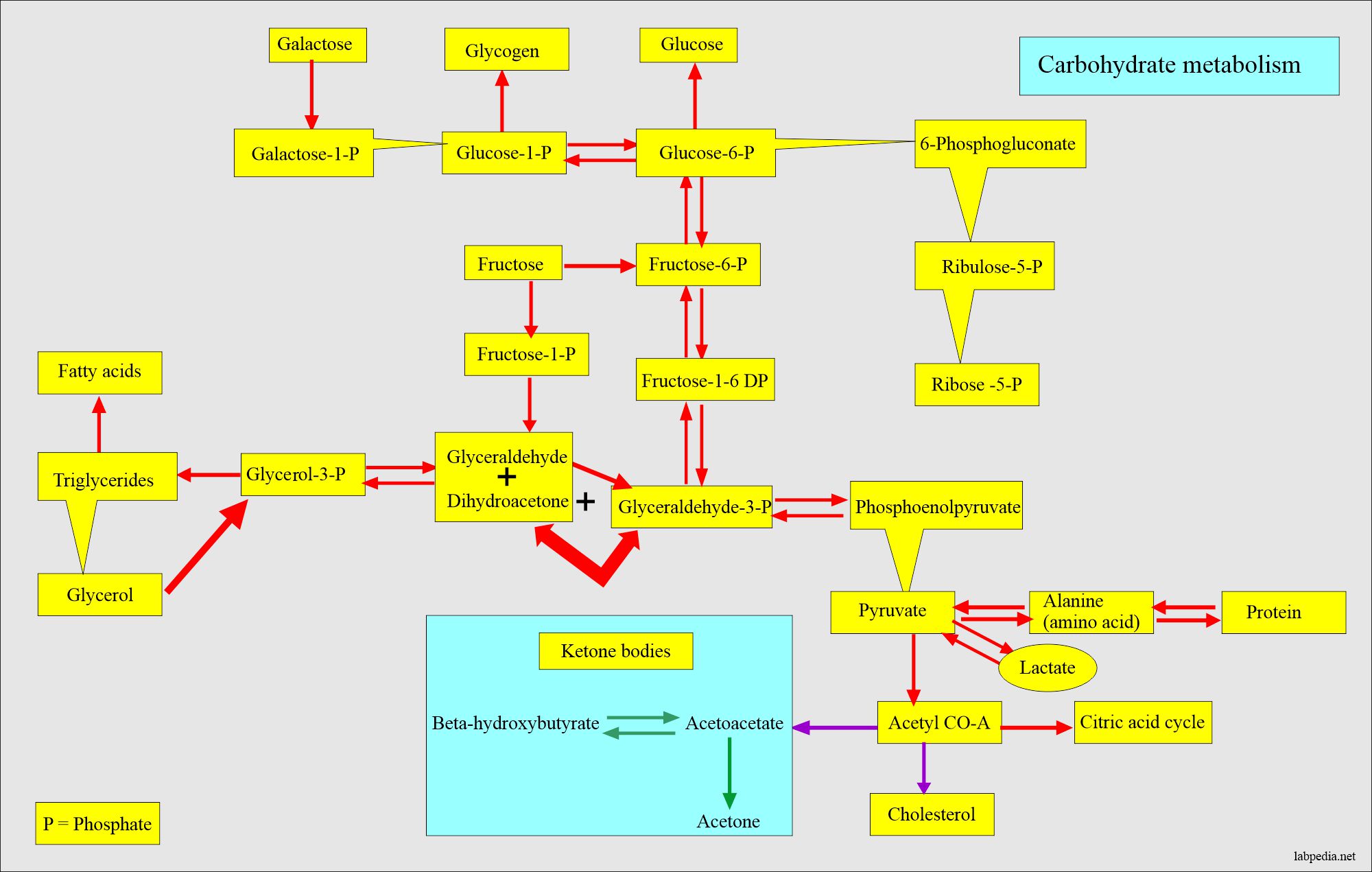Diabetes is a chronic disease characterized by high levels of sugar (glucose) in the blood. There are two main types of diabetes: type 1 and type 2. In type 1 diabetes, the body does not produce any insulin, a hormone that regulates blood sugar. This type of diabetes is usually diagnosed in children and young adults and requires lifelong insulin therapy. In type 2 diabetes, the body does not use insulin properly, a condition known as insulin resistance. This type of diabetes is more common and often occurs in people who are overweight or obese, physically inactive, and have a family history of the disease.
Carbohydrate metabolism refers to the process by which the body breaks down carbohydrates and converts them into energy. Carbohydrates are the body's main source of energy and are found in foods such as bread, rice, pasta, fruits, and vegetables. When we eat carbohydrates, they are broken down into glucose in the digestive system and absorbed into the bloodstream. The pancreas, a gland located behind the stomach, then releases insulin to help transport the glucose into the cells, where it is used for energy.
In people with diabetes, carbohydrate metabolism is disrupted due to a deficiency or malfunction of insulin. In type 1 diabetes, the body does not produce any insulin, so glucose cannot be transported into the cells for energy. As a result, glucose accumulates in the blood, leading to high blood sugar levels. In type 2 diabetes, the body does not use insulin properly, causing the cells to become resistant to its effects. This results in decreased uptake of glucose into the cells, leading to high blood sugar levels.
To manage their blood sugar levels, people with diabetes need to pay close attention to their carbohydrate intake. This includes monitoring the type and amount of carbohydrates they eat, as well as the timing of their meals. Some people with diabetes may need to take insulin injections or oral medications to help regulate their blood sugar levels. They may also need to follow a healthy eating plan and engage in regular physical activity to help manage their diabetes.
In conclusion, diabetes is a chronic disease characterized by high blood sugar levels due to a deficiency or malfunction of insulin. Carbohydrate metabolism is the process by which the body breaks down carbohydrates and converts them into energy. In people with diabetes, this process is disrupted, and they need to pay close attention to their carbohydrate intake and follow a healthy lifestyle to manage their blood sugar levels.
How Does Diabetes Affect Metabolism?

The type, and amount, you consume can make a difference to your blood glucose levels and diabetes management. This seemingly idyllic student environment ended abruptly when Carl was drafted into the Austrian army in 1916, during the first World War. If you take gabapentin you also may experience weight gain as a side effect. This hormone regulates your blood sugar by shuttling glucose from your bloodstream to your tissues. Acetyl CoA enters the Krebs cycle by combining with a four-carbon molecule, oxaloacetate, to form the six-carbon molecule citrate, or citric acid, at the same time releasing the coenzyme A molecule.
Carl and Gerty Cori and Carbohydrate Metabolism

Each phosphate released in this reaction can convert one molecule of ADP into one high-energy ATP molecule, resulting in a gain of two ATP molecules. In this form, glucose-6-phosphate is trapped in the cell. The living conditions were poor, and it had been necessary for him to prove his Aryan descent to obtain employment at the university. The electron transport chain transfers electrons through electron carriers, ultimately to oxygen in a process called oxidative phosphorylaton. Our efforts have been largely complementary, and one with the other would not have gone as far as in combination. This step uses one ATP, which is the donor of the phosphate group. Thus, glycolysis uses two ATPs but generates four ATPs, yielding a net gain of two ATPs and two molecules of pyruvate.
Carbohydrates and Diabetes

In the 19th century, the great French physiologist, Claude Bernard, discovered glycogen, the starch-like substance found in muscles and the liver. Glucagon causes the liver to break down glycogen into glucose by this process. Explore: Healthy Oils Use healthy oils like olive and canola oil for cooking, on salad, and at the table. Gabapentin is a prescription drug that is used to treat various medical conditions such as seizures, restless legs syndrome, and nerve pain and it belongs to a class of anticonvulsant medication. Metabolic rate is the amount of energy your body burns in a certain amount of time, usually measured in calories. Eight ounces of natural fruit juice, without added sugar, has the same amount of sugar as 8 ounces of regular soda, about 6 teaspoons of sugar. In addition to generating an additional ATP, this pathway serves to keep the pyruvate concentration low so glycolysis continues, and it oxidizes NADH into the NAD + needed by glycolysis.
Diabetes and Carbohydrate Metabolism

HEALTHY OILS Water Drink WATER Vegetables The more veggies — and the greater the variety — the better. However, these two ATP are used for transporting the NADH produced during glycolysis from the cytoplasm into the mitochondria. The plaque commemorating the event reads: Beginning in the 1920s, Carl and Gerty Cori conducted a series of pioneering studies that led to our current understanding of the metabolism of sugars. In the cells, glucose, a six-carbon sugar, is processed through a sequence of reactions into smaller sugars, and the energy stored inside the molecule is released. . Once the absorbed monosaccharides are transported to the tissues, the process of cellular respiration begins 2, carry their electrons to the electron transport chain. N Engl J Med.







